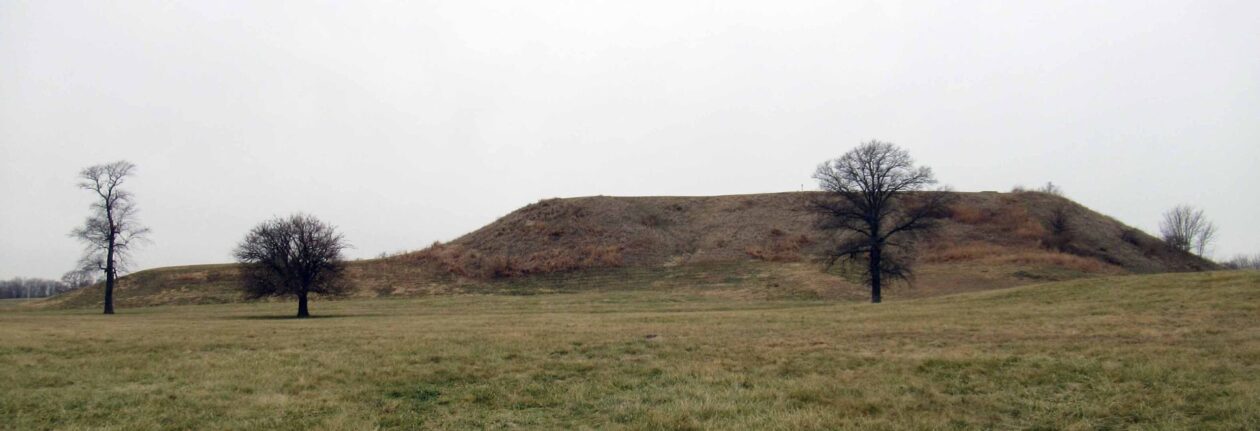Dambulla, Sri Lanka
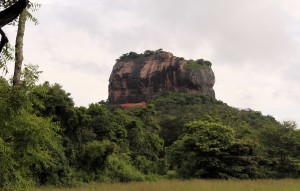
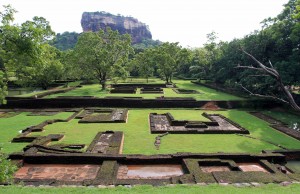
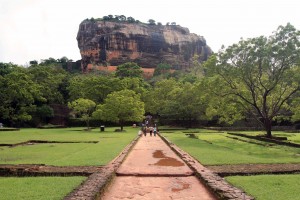
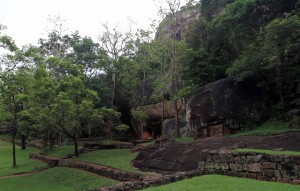
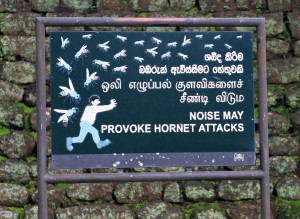

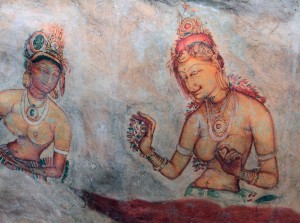
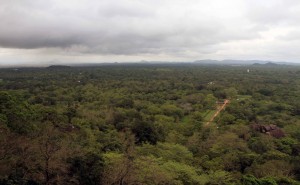
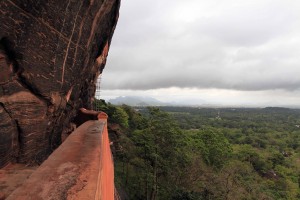
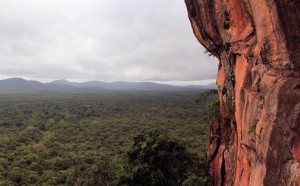
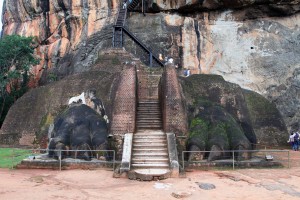
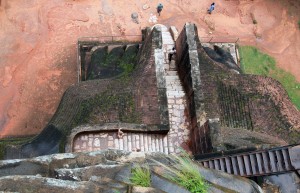
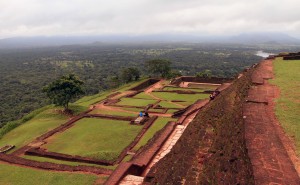
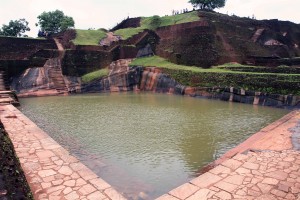
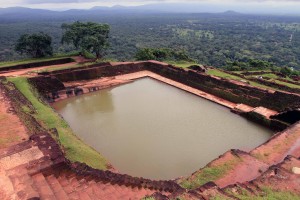
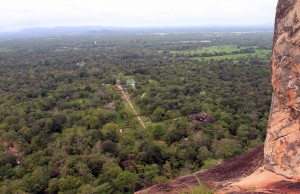
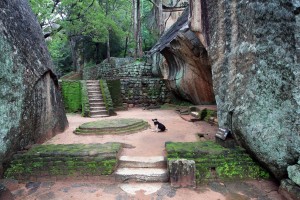
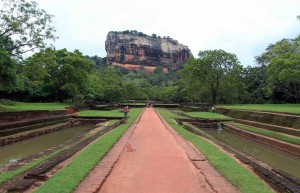
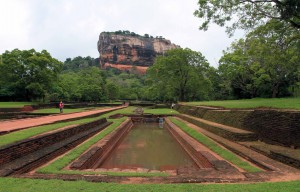
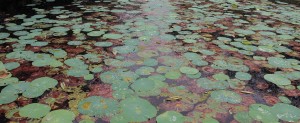
Luckily there was only a slight drizzle outside today and it didn’t rain much all morning. After waking up, I got ready, and walked to the bus stop in Dambulla; I then took the bus to Sigiriya, which took a little over an hour before we reached the entrance. After exiting the bus, I walked the long dirt road to the ticket counter and entrance. Sigiriya (also known as “the Lion’s Rock”), was originally a monastery during the second and first centuries BC; King Kassapa I (473-491 AD) transferred the administrative center of his kingdom from Anuradhapura to Sigiriya and ruled the island from here; during his reign, the king built Sigiriya fortress with the palace, gardens, and other royal buildings; much of the ruins left behind on this site date back to King Kassapa I, but several buildings have also been dated to the sixth-century AD as well. After passing through the entrance, I walked past the inner moat, the inner rampart, and through the water garden, which utilizes ancient hydraulic technology; there are four fountains in the gardens that are fed by underground water conduits and work on the simple principles of gravity and pressure (I was able to observe one fountain working, but it wasn’t more than a foot tall). I then walked past the ruins of the Summer Palace and up to the Boulder Garden, at the foot of the Lion’s Rock. I then climbed the steps which led up to paintings still preserved on the side of the Lion’s Rock, well above the ground below; pretty much all of these well preserved classical Sri Lankan paintings were of well-endowed bare breasted women; they were actually fine paintings and still retained their color. After viewing the paintings, I walked along Mirror Wall (named so on account of it being so polished over all the years), which had graffiti made by visitors to Sigiriya from the seventh- to the nineteenth-centuries AD. Then I reached the Lion’s Paw Terrace, on the north side of Lion’s Rock (no doubt where Sigiriya got its nickname), which had two giant lion’s paws built flanking each side of the staircase that led up to the palace grounds on top of the rock. I climbed the steps up to the top (luckily, steel steps were installed since the original rock-cut steps were worn smooth) and soon reached the palace ruins; I walked all around the palace complex, taking many pictures, and enjoying the view (or at least as much of it as I could see on account of the weather). I then walked back down the steps, explored the surrounding grounds some more, before exiting Sigiriya and walking back to the road, where I waited to catch a bus back in to Dambulla.
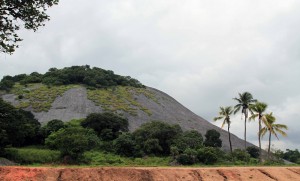
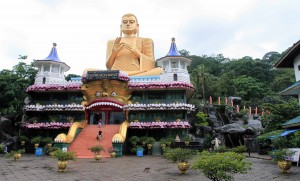
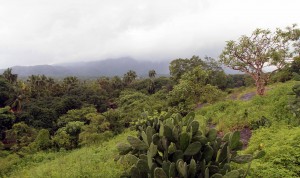
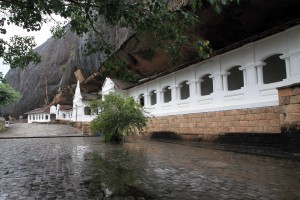
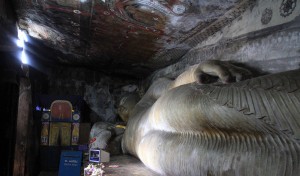
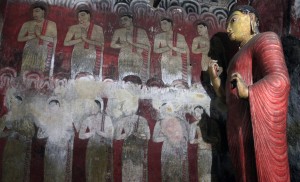
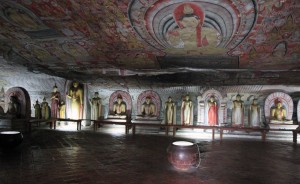
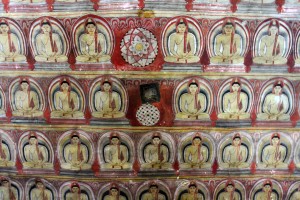
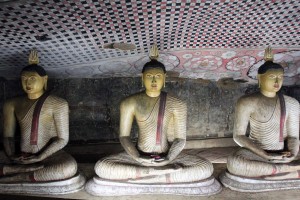
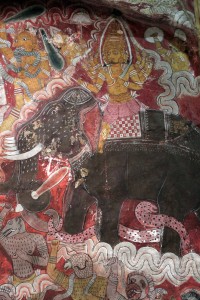
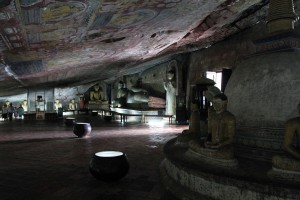
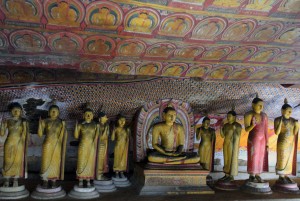
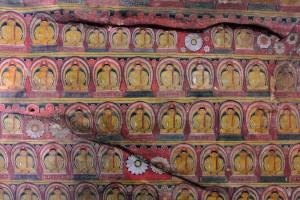
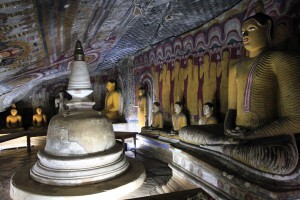
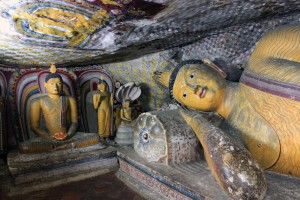
After reaching Dambulla, I walked to the Dambulla Cave Temple (about three kilometers south of the city center); it was now raining again, so I had my umbrella out and put to good use – though the bottoms of my jeans were soaked from being rained on. I soon reached the cave temple area, walked by a lake on the side of the giant rock mound, and then entered the temple complex. I was surprised to see a large building with a scary mouth as the entrance, eyes above it, and paws and legs as railings on each side of the stairs leading up to the entrance; there was also a gold Buddha statue above and behind the building, and an opening on the left side of the structure that resembled the opening to the bat cave in the old ‘Batman” television show; it was a bizarre and seemingly inappropriate mix between Buddhism and a carnival. After finally locating the ticket counter (not so well marked), I went inside the garish building, which was actually a museum, and looked at their collection of Buddhist statues and ceremonial and parade items. I then walked back outside and up the many steps to the real attraction: the cave temples. There were several cave temples, all right next to each other, and they were all painted inside, with thousands of images of Buddha; there were also statues of Buddha, in various poses as well as some reclining Buddhas; even though the historic site was small and it didn’t take long to walk around and see everything, the temples were full of art and were well worth a visit. After being satisfied with my visit, I walked through the rain back to the hostel. I then packed my bags, said goodbye to the local man who manages the hostel, and then walked to the bus stop in the city center. I then took a bus to Kandy after having been talked in to visiting the town by the Portuguese man who helped to run the hostel while he stayed there. The bus to Kandy left after 15:00 and it took about three hours to reach the town; naturally the bus was overcrowded with passengers and many were “butt-to-nut” and some were “butt/nut-to-face”.
After the bus finally reached Kandy (Kandyland!), we were let out near the lake and the Sri Dalada Maligawa temple complex. There happened to be a Pizza Hut right at the bus stop and I was hungry, so I went inside, dropped my bags next to a table, and ate a large Mughal Chicken Tandoori pizza (not bad, but could’ve used more cheese and sauce) and drank an orange juice and a liter of water. After dinner, I found a tuk-tuk that could take me to the hostel I was going to (run by the same company that runs the one I stayed at in Dambulla; also, the Portuguese man at the one in Dambulla notified the Canadian woman at this one in Kandy that I was coming). When I reached the hostel, I checked in with the local Sri Lankan man who helps manage the hostel and then he contacted the Canadian woman who was out with three of the guests at a nearby expat pub. I decided to join her and the other guests (one Spanish, one Dutch, and one English, all female), so I took a tuk-tuk to the pub and we soon spotted each other after I walked inside; I ended up having two Lion Lagers (brewed in Sri Lanka) while we conversed over many different topics; actually, they had already gotten to know each other pretty well, so I found myself at the center of attention with many questions directed my way – mostly about my travels and plans for the future. I enjoyed hanging out with them (hostels are usually friendly places where one can meet a lot of great, fellow backpackers) and I must admit, it was a real pleasure to listen to the cute Englishwoman speak – God help me, I’m in love with the fine, well-tuned, female English accent; I will probably end up marrying an Englishwoman just so I can listen to her everyday (like music to my ears. ACHTUNG! NOTE: this has to be a fine, sophisticated accent; a coarse Cockney accent will not do; also, if she sounds like Eliza Doolittle (pre-Pygmalion transformation), then I’m turned off). Anyway, while in the pub we got to witness a birthday celebration for a Chinese woman which was then followed shortly by a wedding proposal from her fiance, all while their family and friends watched; she accepted her beau’s offer and then gave out pieces of her chocolate birthday cake to everyone in the pub – I had a piece and it was scrumptious. I also ended up having a cappuccino and trying a glass of Arrack (a Sri Lankan produced liquor that tasted like Whiskey and which I liked) before we called it a night and returned to the hostel. Once back at the hostel, I checked a few things on the internet before going to sleep.
